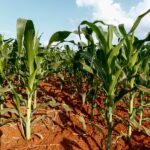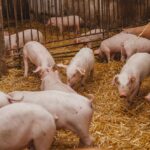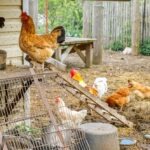The agricultural landscape is constantly evolving, and what is profitable today might not be as lucrative tomorrow. However, certain crops continue to prove resilient, offering excellent returns for farmers. In 2025, as trends in sustainability, consumer demand, and climate change influence farming practices, some crops are expected to be especially profitable. Here’s a look at the most profitable crops to grow in 2025.
1. Avocados
Avocados have seen a meteoric rise in popularity over the past few years, and this trend is expected to continue in 2025. With the increasing demand for plant-based diets, avocados remain a staple in many kitchens worldwide. Their versatility in salads, sandwiches, smoothies, and as a healthy fat source has made them a sought-after crop.
- Why Profitable? Avocados have a high market price, especially in regions where they are not widely grown. The initial investment in planting and nurturing avocado trees can be significant, but once established, these trees are highly productive, with a long harvest window.
- Where to Grow? Regions with warm climates, such as parts of South Africa, California, and Mexico, offer ideal conditions for avocado farming.
2. Saffron
Saffron is known as the world’s most expensive spice, and its cultivation is labor-intensive but incredibly rewarding. With growing interest in gourmet cooking and natural food coloring, saffron continues to command premium prices. The market for saffron is expanding beyond traditional culinary uses, as it is also valued for its medicinal and cosmetic properties.
- Why Profitable? It takes around 75,000 saffron flowers to produce a pound of saffron, making it an extremely labor-intensive crop. However, the high price per gram makes it highly profitable.
- Where to Grow? Saffron thrives in dry, high-altitude climates with well-draining soil, making regions in South Africa, India, and parts of the Mediterranean ideal for cultivation.
3. Mushrooms (Especially Medicinal Varieties)
Mushrooms have become increasingly popular in the health and wellness industry, especially medicinal varieties like reishi, cordyceps, and lion’s mane. These mushrooms are used for their immune-boosting and cognitive-enhancing properties. Traditional edible mushrooms like shiitake and oyster mushrooms also remain in high demand for culinary purposes.
- Why Profitable? Mushroom farming is highly efficient and can be done in smaller spaces, such as greenhouses or even indoor environments. Medicinal mushrooms are particularly lucrative due to their health benefits and higher market prices.
- Where to Grow? Mushrooms require little space, and with the right growing conditions, they can be cultivated anywhere, including in urban environments or under controlled greenhouse conditions.
4. Quinoa
Quinoa has gained international recognition as a superfood due to its high protein content, gluten-free nature, and versatility. As demand for plant-based foods continues to rise, quinoa remains a top contender for profitability in 2025. In addition, quinoa is easy to grow in a variety of climates, making it a suitable option for many farmers worldwide.
- Why Profitable? Quinoa is resilient, requires relatively low input costs, and has high market demand, especially in the health-conscious food industry.
- Where to Grow? Quinoa is traditionally grown in the Andes but has adapted well to other regions, including parts of North America, Africa, and Australia.
5. Ginseng
Ginseng is a popular herbal remedy known for its adaptogenic properties, promoting overall health and reducing stress. The demand for ginseng is expected to continue growing, particularly in Asian markets where it has been used for centuries. In addition to its medicinal value, ginseng is increasingly popular in the supplement and skincare industries.
- Why Profitable? Ginseng roots can take several years to mature, but once they are ready for harvest, they fetch premium prices, especially if grown organically or with special certifications.
- Where to Grow? Ginseng grows best in shady, woodland areas with well-drained, acidic soil, making it ideal for regions with cooler climates, such as parts of the United States, Canada, and South Korea.
6. Culinary Herbs (Basil, Thyme, Mint, etc.)
The demand for fresh, organic culinary herbs is on the rise as consumers seek out healthy, flavorful alternatives to processed seasonings. Herbs such as basil, mint, thyme, and rosemary are particularly popular in the culinary world and can be sold fresh, dried, or as part of herb-based products.
- Why Profitable? Culinary herbs are quick-growing, require relatively low input costs, and can be sold in both fresh and processed forms, increasing their marketability. High-value herbs like basil and mint can be grown year-round, especially in greenhouses.
- Where to Grow? Herbs are well-suited to a variety of climates and can be grown both indoors and outdoors. They thrive in temperate and Mediterranean climates.
7. Industrial Hemp
Industrial hemp is one of the fastest-growing crops in terms of profitability. As demand for hemp-based products increases, particularly in the areas of textiles, paper, biodegradable plastics, and CBD (cannabidiol) oils, farmers are turning to hemp cultivation as a lucrative option. Hemp’s ability to grow quickly and with minimal pesticides makes it an attractive crop for sustainable agriculture.
- Why Profitable? Hemp has multiple uses, including fiber, seeds, and CBD, all of which are in high demand across various industries.
- Where to Grow? Hemp grows well in temperate climates and can be cultivated in a wide range of soil types. It has been legalized for commercial farming in many countries, including the United States, Canada, and parts of Europe.
8. Berries (Blueberries, Strawberries, and Raspberries)
Berries remain a profitable option due to their growing demand in both fresh and processed forms. Blueberries, in particular, are regarded as a superfood, packed with antioxidants and vitamins. The market for berries has expanded as consumers increasingly prioritize healthy and organic options.
- Why Profitable? Berries have high per-acre yields and can be sold fresh or frozen, providing farmers with multiple income streams. They also enjoy a long harvesting period, which extends profitability.
- Where to Grow? Berries are well-suited to temperate climates, though they require specific care and attention in order to yield consistently high-quality produce. Blueberries, for example, thrive in acidic soils and require careful irrigation.
In 2025, several crops hold the potential to be highly profitable for farmers, depending on their location and resources. From the high-end demand for avocado and saffron to the versatility and fast-growing nature of herbs and mushrooms, diversifying your crops and focusing on market trends can help maximize profitability. When selecting crops, it’s essential to consider factors such as climate, input costs, and consumer demand to ensure long-term success. With the right planning and investment, these crops can bring significant returns for farmers looking to stay ahead of the curve in the competitive agricultural market.
Join 'Farmers Mag' WhatsApp Channel
Get the latest Farming news and tips delivered straight to your WhatsApp
CLICK HERE TO JOIN






